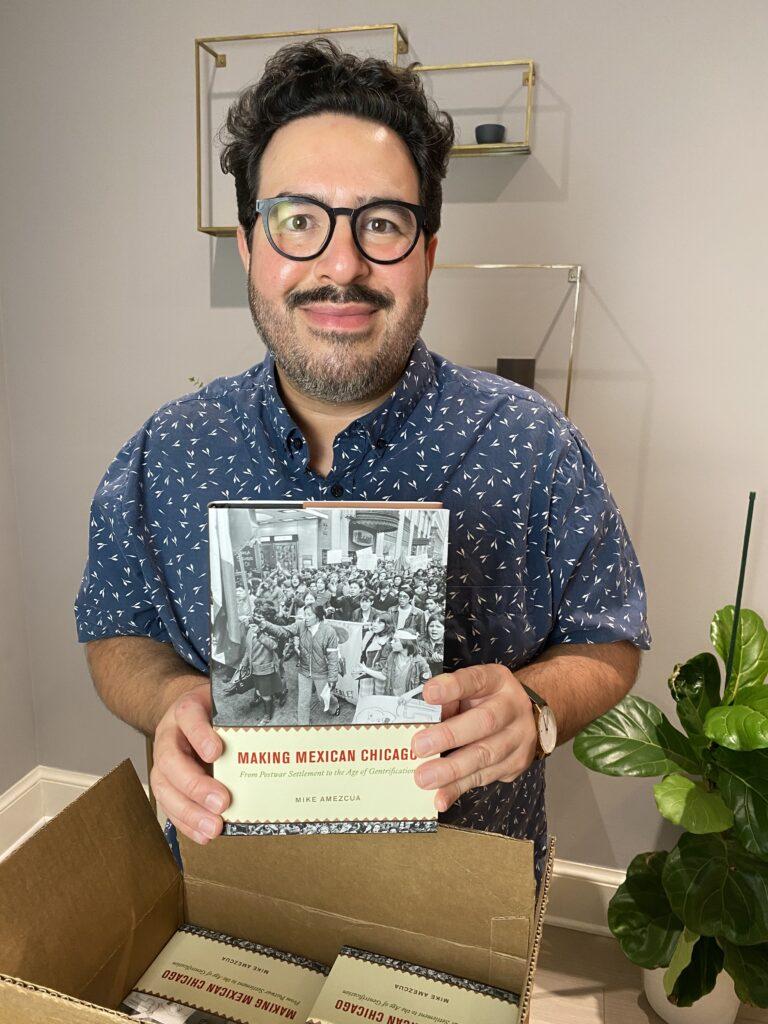A Georgetown University professor authored a book about the history and development of the Chicago Latinx community between World War II and the 1990s, looking at instances of deportation, segregation and oppression.
Mike Amezcua, assistant professor in the department of history, wrote “Making Mexican Chicago: From Postwar Settlement to the Age of Gentrification” after exploring Latinx history in Chicago through stories about his grandmother, who was deported from Chicago with her parents during the Great Depression.
“Making Mexican Chicago” examines a tumultuous period in time for Mexican immigrants, according to Amezcua.
“It was a moment when hundreds of thousands of Mexican immigrants and their children, American citizens, were rounded up and repatriated because they were blamed for parts of the ills of the economy during that time,” Amezcua said in an interview with The Hoya. “The idea for the book goes way back to then because it thought about what kind of city my grandmother would have inherited in Chicago. She never returned to Chicago and lived the remainder of her life in Mexico.”
Amezcua spent 10 years writing “Making Mexican Chicago” and spoke with urban historians, Latinx historians and community members in Chicago in order to complete the book.

“This is something that I not only went to traditional archives for but also that I actually built relationships with Mexican and American communities in Chicago so that those communities would share documents and photos with me so that I could complement my archival research that I was doing with community-based knowledge about the city,” Amezcua said.
The book tells an important history of mid- to late-20th century Chicago through the perspective of Mexican immigrants, according to Brian Hochman, director of American studies.
“This is what makes Professor Amezcua’s research so impressive,” Hochman wrote in an email to The Hoya. “By centering Mexican immigrants in the remaking of Chicago’s post-WWII geography and politics, he has told a compelling new story that will force scholars of urban America to reimagine the field’s dominant narratives.”
Chicago is not usually perceived as a city with a large Latinx presence, but it is actually home to one of the first Mexican communities in the United States, according to John Tutino, a professor in the department of history who teaches undergraduate and graduate courses on Mexico in the context of the Americas and the world.
“What Mike’s book does is really focus on the community organizing itself, engaging to make a strong community within Chicago and doing it by engaging the city’s political powers and other ethnic groups,” Tutino said. “It is not only a pivotally important book in Mexican American history, but it is a pivotally important book in U.S. urban history because it shows the multicultural city being created post-World War II.”
While cities like New York City, Los Angeles and Houston are usually associated with large Latinx communities, Chicago has the fifth largest Latinx population with 774,000 people.
Amezcua said that Chicago remains one of the most segregated cities in the United States with predominantly white local governments and citizens practicing illegal methods of separation and redlining to resist immigration, a topic covered in “Making Mexican Chicago.”
“There was this unspoken agreement between neighbors to hold the line, not just against Mexican immigrants, but a belief that by holding the line against Latinx people you would then also be holding the line against African Americans,” Amezcua said. “It was almost like this two tiered form of segregation, and I wanted to make sure to show that on the ground, block by block.”
Amezcua wanted to examine the often overlooked stories of immigrants in Chicago.
“I found the story so profound, and I thought I need to write about Chicago,” Amezcua said. “I decided that while there are cities in the United States with much higher Latinx populations, there has already been a lot of good work on the East Coast and the West Coast but not the Midwest and a big metropolis like Chicago.”




















